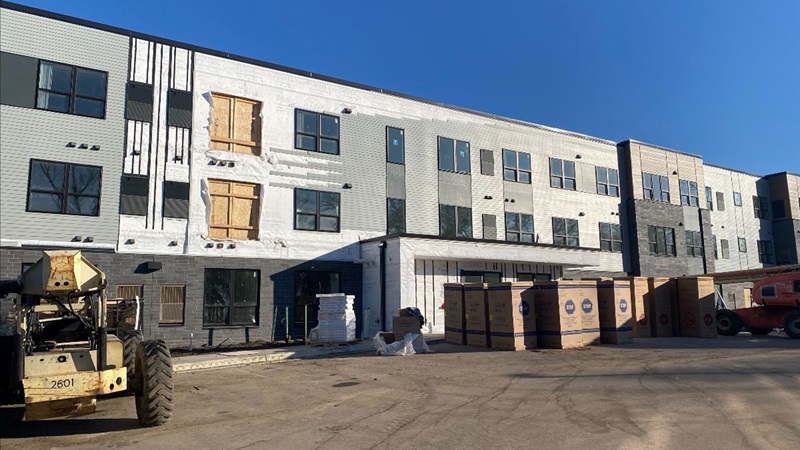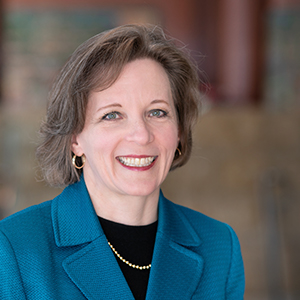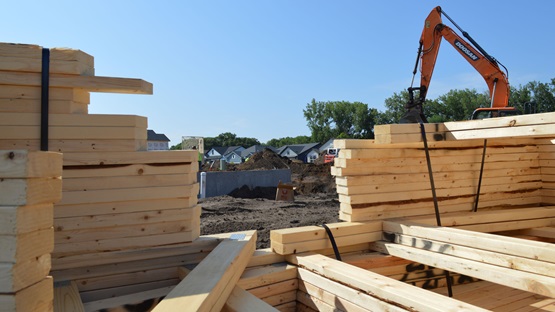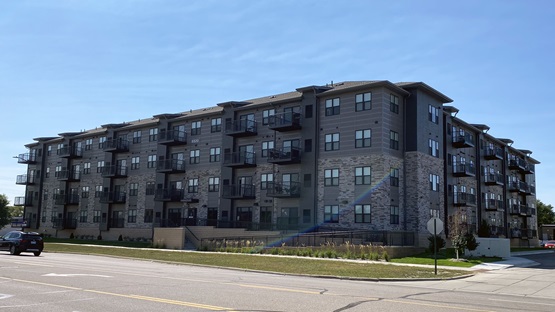Land use, zoning, and planning policies and processes define and limit where multifamily housing development can occur. While some requirements come from the state or regional levels, local governments have jurisdiction over what types of development may be built, exactly where it may be located, and what processes it must follow. Cities are not uniform in their approaches to land use regulation and development; developers must navigate important procedural differences and requirements, even among cities that generally allow for multifamily housing.
Some of these differences result in costs that are easy to see. Requiring enclosed parking spaces or costlier exterior materials increases project expenses, for example. Other differences increase the cost of development more subtly by causing longer timelines before construction begins or by including multiple public decision points that can increase the risk of a project’s failure.
We wanted to learn how different cities’ land use policies and processes would vary to allow a hypothetical, five-story, 211-unit apartment complex to be built, so we surveyed cities to see what process our hypothetical project would face in each jurisdiction. Our survey, developed with the Sensible Land Use Coalition and the Twin Cities Housing Alliance, went to planning staff in a subset of suburban cities in the Minneapolis-St. Paul metropolitan area.
We focused on 15 cities with recent track records of approving multifamily developments. Ten cities, representing an array of fully developed and developing communities, responded: Blaine, Bloomington, Eagan, Lakeville, Maple Grove, Minnetonka, Plymouth, Roseville, St. Louis Park, and Savage.*
At an event we hosted at the Federal Reserve Bank of Minneapolis on February 14, we presented our initial analysis of the survey results and heard reactions from panels of local planners and developers. Though common narratives often portray cities and developers in opposition, with conflicting goals and interests, they found common ground and shared ideas for ways that land use regulations could be improved.
Land use requirements can add costs beyond what developers envision
Direct costs arise when a city’s requirements for a building differ from a developer’s most economically efficient option. Sometimes, these costs have to do with the physical form of the building. For example, when cities require costly architectural features or building materials, the construction costs go up without necessarily increasing that building’s ability to generate revenue for its owners. Eight of the 10 cities we surveyed allowed at least one low-cost material to cover a building’s exterior.
Under state statute, cities may require new developments to either set aside land for local parks or pay a park dedication fee, a one-time fee to support the city’s acquisition and development of parkland. Among our respondents, park dedication fees ranged from $1,500 to $8,000 per unit.
Other costs are incurred when cities add requirements beyond what developers would have otherwise planned to serve their residents. While all cities in our sample have some parking requirements, the details vary significantly. For example, some cities require enclosed parking spots—like those you’d find in garages or underground parking structures—while others only require surface parking spots. The per-parking-spot cost difference between the two is significant. Developers we spoke with suggested that surface-lot spots cost $3,000–$10,000 apiece, while structured spots can cost $30,000–$50,000. Planners said that some enclosed spots, like those built within the confines of a building’s foundation, may split the difference between the two.
As seen in Figure 1, six cities in our sample would require at least 155 enclosed parking spots for our hypothetical building if it contained only one-bedroom apartments. Several cities base their parking requirements on the number of bedrooms, rather than the number of units, in a project. If the project were evenly split between one- and two-bedroom apartments, nine of the 10 respondent cities would require more parking spots than the developer of our hypothetical building proposed.
Developers know that their projects need curb appeal and adequate parking to attract tenants. However, they believe their understanding of the market is more instructive than cities’ guidance. City planners, meanwhile, point out that they need to control for externalities—that is, the impacts of a development that extend beyond its lot boundaries, including the availability of parking alternatives.
In other cases, cities may use land use regulations to pursue policy goals broadly related to housing. For example, two respondent cities stated that they would require our hypothetical development to include units that were affordable and available only to households earning less than a certain percentage of the area median income. Four more would require or strongly encourage affordable housing units if the development benefits from public resources, such as TIF, or tax increment financing. Another city allows developers to apply different design standards if they include affordable housing in their projects.
While affordability requirements add expenses to a project, some argue that having them expressed in policy offers efficiencies in other ways. Nick Johnson is a senior planner in Bloomington, one of the cities that would require affordable housing in the hypothetical development. If policymakers are going to leverage the development process to achieve these other goals, he explained, having expectations (and incentives) clearly stated can facilitate a quicker timeline. “It makes it a whole lot easier on the staff and city side of things to just make the expectations known up front,” he said.
The way cities enforce regulations varies, which increases time and risk—and ultimately adds costs
Regulations also add costs to the development process by increasing the time and risk it takes to develop a project. At our event, planners urged the audience to remember that these review processes ensure that there is adequate infrastructure to support new development. “I’m a big fan of a functioning regional sewer system,” said Jill Hutmacher, community development director for the City of Eagan. “I think flushing is very much undervalued.”
But the ways cities choose to enforce these regulations result in quite different timelines. About half the cities in our sample reported that projects similar to our hypothetical proposal typically make it through their entire planning process in 120 days or less.

Where regulations extend the amount of time developers spend designing (or redesigning) their projects and pursuing approvals, the costs are straightforward. The longer it takes to build a project, the longer developers will pay carrying costs, such as property taxes or interest on loans, for land that will not be generating revenue via rents.
And potential political or regulatory hold-ups cost money, too. Each vote that a city body conducts on a project is a decision point that may require a developer to spend time addressing new concerns, or even see their entire project idea scuttled. Projects potentially subject to such uncertainties may face higher interest rates or other underwriting demands from a lender because risks are priced into the interest rates developers must pay.
When developers need a change or exception to a city’s land use plans, the city council or planning commission is often required to vote on the request. Figure 2 shows how some cities require that more such votes be conducted for the same zoning processes compared to their peers. For example, six cities require that two votes be conducted for variances, while four cities require only one. And even if the comprehensive plan and zoning district both allow for multifamily development on a piece of land, only four cities in our sample allow for an administrative approval of their final plans. In other words, in the other six cities, a developer’s final plans are subject to a vote, even if they conform to a city’s pre-established guidelines.
Just because an administrative option is available doesn’t mean it will always be applicable, however. “We did an administrative process [for final approvals in some areas of Burnsville],” said Regina Dean, who was formerly with the City of Burnsville and now heads up community development for the City of Savage. “The properties [there] are so unique—they’re shaped oddly, there are challenges with topography.” As a result, developers still couldn’t access the administrative process in many cases.
At our event, city planners and property developers alike described a desire for more simplicity in the planning process. In many situations, though, it’s hard for cities to provide clear guidance. No two pieces of real estate are exactly alike—and the differences can be especially large in complex environments like built-out neighborhoods where developers hope to redevelop land that’s already in use. Some cities encourage developers to engage early by providing informal pre-development reviews. These early meetings can help planners and developers work out some of the thornier issues with a particular site or building design.
In some situations, a planned unit development (PUD) can provide the flexibility necessary to move a project forward. PUDs are like custom-fit zoning districts providing criteria that a developer and city negotiate together. The success of a PUD approach thus depends on the relationship between a developer and a city’s staff.
Among our sample, four cities use PUDs extensively, one doesn’t use them at all, and the rest use them occasionally. Three of the four cities that regularly use PUDs reported relatively short approval timelines. But these estimates only incorporate the time it takes for approval once a developer has completed an official application for their project. The design process begins beforehand, and this “pre-application” period is likely longer when developers and cities are negotiating more complicated approaches like PUDs.
Speakers at our event also noted that development timelines can grow longer when a city’s development market is active. Planning staff and building inspectors can only work so many hours a day, and cities often don’t have the financial resources to do all the work they’d like to, as fast as they’d like to, even under normal circumstances.
“The amount of workload and the amount of people we have to do it is also impacting [our timelines],” said Julie Wischnack, community development director for the City of Minnetonka. “That wasn’t the case maybe five to 10 years ago,” when development was less dynamic in Minnetonka.
“We could rewrite our entire zoning code, but we don’t have the staff to do it,” added Hutmacher. “We don’t have budget to hire consultants to do it for us.”
Public input can help, but hearing process can erode public trust
In addition to hearings before public bodies, cities can require neighborhood meetings where city staff and developers hear residents’ opinions and questions about a project. Our panelists agreed that public feedback can be helpful for addressing neighborhood concerns—but they also pointed out several ways that neighborhood meetings can actually harm trust among residents, elected officials, and developers. Panelists also noted that residents can “weaponize” environmental reviews to try and slow down or ultimately stop a proposed development.
As one panelist pointed out, residents may be upset about project features that a city can’t change. They may have demands that make a project financially unfeasible. And if a hearing stretches on for hours and a project doesn’t change as a result of public input, confidence in the planning process may erode.
“When you [hold a] public hearing [where people voice opposition] but the city council is legally forced to approve a project, you can really degrade the trust of the public,” said Janice Gundlach, community development director for the City of Roseville. “[They’ll say,] ‘Well, you invited me here to a public hearing, and you’re just going to approve this anyway.’ We need to fix this.”
Other layers of government are involved in the development process
Cities may not always have the unilateral power to change their processes. In the Twin Cities region, changes to local comprehensive plans add particular delays and risks. That’s because comprehensive plan amendments generally require a two-thirds majority vote from a city council instead of a simple majority vote and must be reviewed by the Metropolitan Council, a regional government body.
When a proposal requires a comprehensive plan amendment and an environmental review, the Metropolitan Council does not review the comprehensive plan amendment until that environmental review is complete. This practice alone can delay development six months, said Hutmacher, and is out of a city’s hands.
The Metropolitan Council isn’t the only other body that is involved in local land use decisions. Six of the cities in our sample were each covered by at least three watershed districts or management organizations. Each of these bodies has its own expectations for how developers will manage the impacts of their projects on water quality.
Other actors outside of planning and zoning staff may include county departments of transportation (when a project abuts a county road) and public works departments. Not all actors are pursuing the same goal when it comes to designing a project, pointed out Joseph Peris of Ryan Companies, a large developer in the Twin Cities area.
“If you’re [building] on a county road, the county might be incentivized to have people drive through as quickly as possible for commutes,” he said. “But cities might want to slow [traffic] down.”
Balancing planning and politics
Land use policy will always exist in a tense space of trying to balance the economic costs of regulation with the demands new development can place on a community’s resources. When optimally designed, these policies provide certainty and predictability to developers without threatening the capacity of local and regional infrastructure. When policies are out of balance, they can instead act as an exclusionary mechanism that prevents growth despite market demand.
Resolving this complexity isn’t always straightforward. “The politics of local resistance to land use changes are a barrier and there’s a cost to that, [but] we need to be careful about not throwing the baby out with the bath water,” said Hutmacher. “Reducing those political barriers can also reduce the ability to analyze [important issues] from a local level.”
On the other hand, while it may be impossible to extricate politics from the planning process, at our event there was broad agreement from developers and city staff alike that state laws could empower flexibility for developers in a way that also protects cities’ ability to manage sustainable population growth.
It shouldn’t be surprising that there was so much common ground, according to Peris, as developers “are trying to help cities execute on their long-range plans and visions.” As we heard, thoughtful improvements that streamline the development process will help cities and developers alike work more efficiently toward those visions and address the region’s housing shortages.
“We have a housing crisis,” said Peris. “We need 18,000 new housing units per year across the metro, and there’s a zero percent chance we’re going to get there if every project is approved on a PUD—period, full stop. We need to make sure that we are actually zoning and have our base zoning code allow for growth and new development.”
Endnote
* Because we are more interested in the variation among these cities than in any individual city approach, we are anonymizing the cities in reporting survey results.
Libby Starling is Senior Community Development Advisor in Community Development and Engagement at the Federal Reserve Bank of Minneapolis. She focuses on deepening the Bank’s understanding of housing affordability, concentrating on effective housing policies and practices that make a difference for low- and moderate-income families in the Ninth Federal Reserve District.








